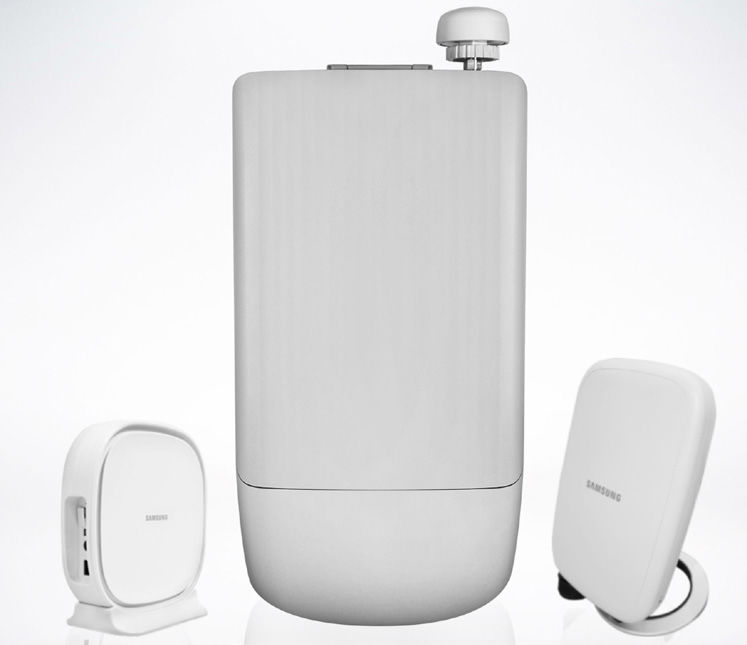Need to Know: Cable Is Wired for 5G

5G may be the hottest thing in wireless and mobile technology, but the new standard needs one thing more than any other: wires, and lots of them.
For the cable industry, 5G offers a huge opportunity for new fixed and mobile wireless services, using cable’s core asset: endless miles of wires in the form of hybrid fiber/coax (HFC) architecture and a growing mix of fiber-only pipes. Optical fiber cable are thin strands of glass that carry massive volumes of data with light signals and minimum loss, and coaxial cable is the traditional lines cable operators use to deliver video, voice and data services to most customers.
Need to Know:5G — Riding Wireless’s Next Wave
HFC “is an excellent vehicle for that because it provides power, right of way and backhaul for all of that small-cell radio equipment,” Craig Cowden, VP of wireless technology at Charter Communications, said during a recent webinar on the topic hosted by CableLabs. “Whether we’re talking inside the home or outside the home, we believe cable is going to be the first truly scalable fixed mobile convergence platform.”
In other words, it may be a wireless network, but it’s going to need a lot of cells, and those cells need to be connected a wired network, including the kind that cable can provide.
Low Latency Needed
But in order to make that work across cable’s mix of fiber-only and HFC networks, operators need a low-latency solution. The cable industry is taking aim at that with a proposed technique called the “Bandwidth Report” (BWR), which aims to deliver super-low latencies by extending a technical bridge between cable’s high-speed DOCSIS network (used today for cable modem service) and 4G/LTE and “pipelining” the upstream packet schedulers of both sides.
Recent trials of BWR conducted by CableLabs and Cisco Systems showed that “DOCSIS is well-positioned as a viable backhaul technology for LTE,” John Chapman, a fellow at Cisco and chief technology officer of the company’s Cable Access unit, proclaimed.
Cable operators are particularly interested in a 150 Megahertz-wide batch of spectrum known as Citizens Broadband Radio Service (CBRS), which resides in the historically underutilized range of 3.55 Gigahertz to 3.7 GHz.
“The 3.5-GHz band remains an important component of Charter’s wireless strategy,” the MSO told the FCC in a recent filing. Charter noted that it has been able to produce speeds of at least 25 Megabits per second downstream and 3 Mbps upstream in the so-called CBRS band tests being conducted in rural areas.
“Charter is certainly looking at that [CBRS] as a potential small cell technology that we would deploy both in the home and outdoors,” Cowden said on the CableLabs webinar.

Charter Communications is testing 5G-based technology in at least six markets with technology partners such as Samsung Electronics: Orlando, Fla.; Reno, Nev.; Clarksville, Tenn.; Columbus, Ohio; Bakersfield, Calif.; and Grand Rapids, Mich.
Comcast, meanwhile, has also asked the FCC for permission to conduct tests using the CBRS band in the Philadelphia area.
Other rival 5G tests underway:
• AT&T has been testing pre-standard 5G fixed wireless in Austin and Waco, Texas; Kalamazoo, Mich.; and South Bend, Ind., and intends to introduce mobile 5G-based service in 12 markets by late 2018.
• Verizon Communications plans to launch 5G-based residential broadband service in four markets in 2018, including Los Angeles and Sacramento, Calif. Verizon estimates that the markets included in that initial launch will span some 30 million homes.
• T-Mobile is accelerating its 600 MHz rollout this year, setting the stage for initial launches in 2019 and a nationwide 5G network by 2020.
• Sprint plans to launch a mobile 5G network in the first half of 2019 leaning on its portfolio of 2.5 GHz spectrum.
• Starry is using millimeter wave spectrum to deliver an uncapped, symmetrical 200 Mbps service in parts of Boston, with beta offerings available in Los Angeles and Washington, D.C. Other markets on Starry’s launch list include New York, Cleveland, Chicago, Houston, Dallas, Denver, Seattle, Detroit, Atlanta, Indianapolis, San Francisco, Philadelphia, Miami and Minneapolis.
Need to Know:5G — Riding Wireless’s Next Wave
Need to Know More?
Have a burning question about 5G — or maybe request for a different topic you’d like to see us tackle? Email us at needtoknow@nbmedia.com and we’ll put our top minds on it!
More from NewBay on 5G:
- 5G and Television [TV Technology]
- 5G and Retail [TWICE]
- 5G and Video Production [Creative Planet Network]
- 5G and Radio [Radio World]
- 5G and ProAV [AVNetwork.com]
- 5G as a Platform [Sound & Video Contractor]
- 5G and Residential Integration [Residential Systems]
- 5G and Pro Audio [Pro Sound News]
- 5G and Education [Tech & Learning]
Broadcasting & Cable Newsletter
The smarter way to stay on top of broadcasting and cable industry. Sign up below
